Installation occurs at a constant speed, inducing no vibration and requiring no pre-auguring. A screw pile displaces a comparatively small amount of soil and tree roots compared to other piling or foundation systems that incur large excavations and massive root damage.
The helices attached to the screw pile shaft are deliberately made from thin steel plate, with a blunt protruding edge to ensure that where possible, roots are moved out of the way during installation rather than severing them.
The pile shaft is considerably smaller than that of a micro pile (or heavy excavation and concrete backfill), so again, displacement of soil and tree roots is minimised.
Keeping root damage to an absolute minimum is key.
Clearly there is no way that a pile can be installed through an existing root system without causing some damage; however, it is vital to the health of the tree to minimise this effect as much as possible.
As previously discussed, micro piling requires the removal of all material in the position of the pile, including any tree roots encountered. Based on experience from years of pile installation, screw piling has been found to leave a large percentage of tree roots intact following installation.
It has been documented that screw pile installation acts to aerate the soil in which it penetrates, which has the added benefit of increasing oxygen supply to the root system.
Compression of soil containing tree roots by traditional foundations has been shown to have a detrimental effect on the continued health of the tree.
Compaction of soil reduces the passage of oxygen to roots during wet weather and can cause the soil to become so dense that roots are no longer able to penetrate through it.
Screw piles overcome this by supporting load directly on their constituent helices. These are placed well below the tree roots to ensure the root ball does not experience any loading influence or disturbance as a result of development.
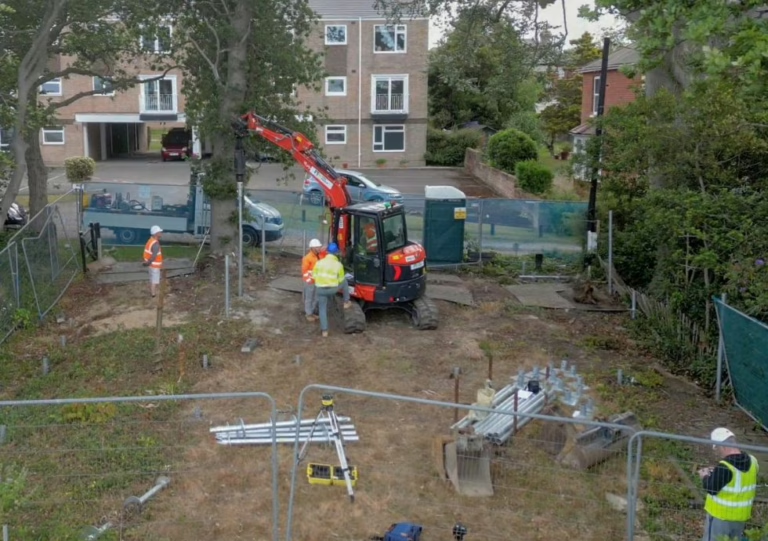
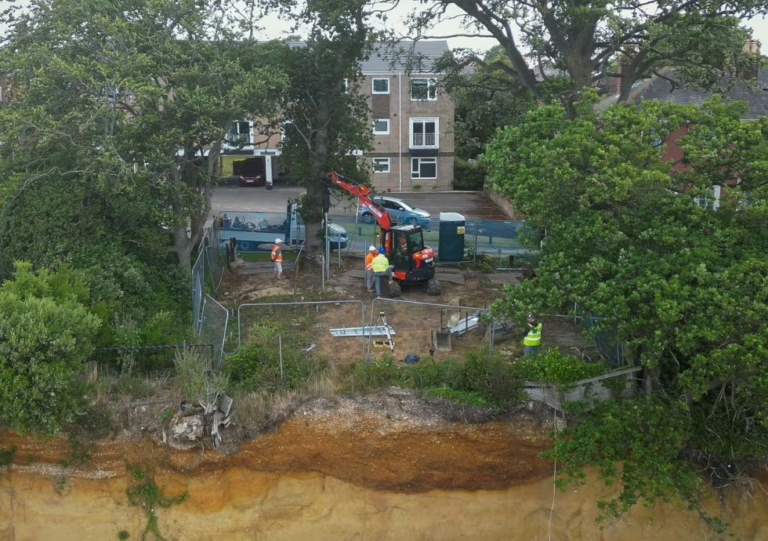
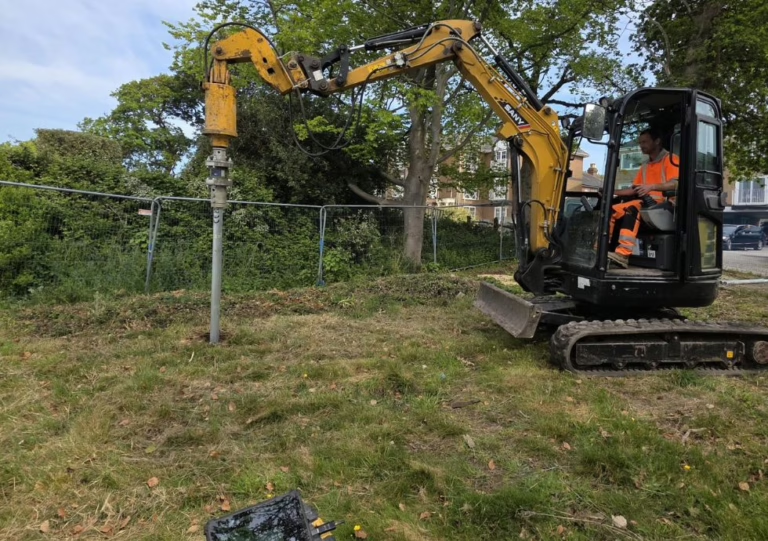
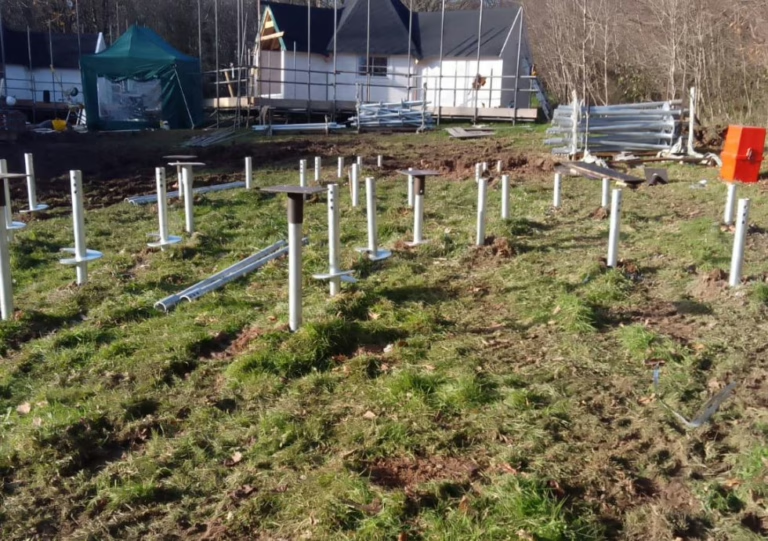
When installed as a deep foundation (4m+), screw piles are resistant to water movement in the soil (heave/shrinkage) caused by water uptake from trees and are therefore ideally suited for use in high-volume potential clays.
Installing screw piles as an alternative to deep footings in such soils is often considerably cheaper.
Screw Piles are installed to a predetermined torque during the installation process. A well-established relationship exists between the torque achieved and the final load capacity of the pile.
As no further pile testing is required once the pile is in the ground, there is no need to place the tree at further risk of damage through the use of testing equipment.
No heavy plant is needed to install a screw pile (unlike the equipment required for concrete driven piles or similar, where large rigs are required).
Our excavator-mounted torque head (capable of installing piles with a SWL of 250kN factored) can be operated from a long-reach excavator, ensuring that the root ball experiences no loading as a result of pile installation.
Typically, screw piles are used in combination with a cast concrete ground beam system, steel ring beam, or block-and-beam system.
This system is flexible enough to allow the pile to be adjusted on site if any large tree roots are encountered and need to be avoided.
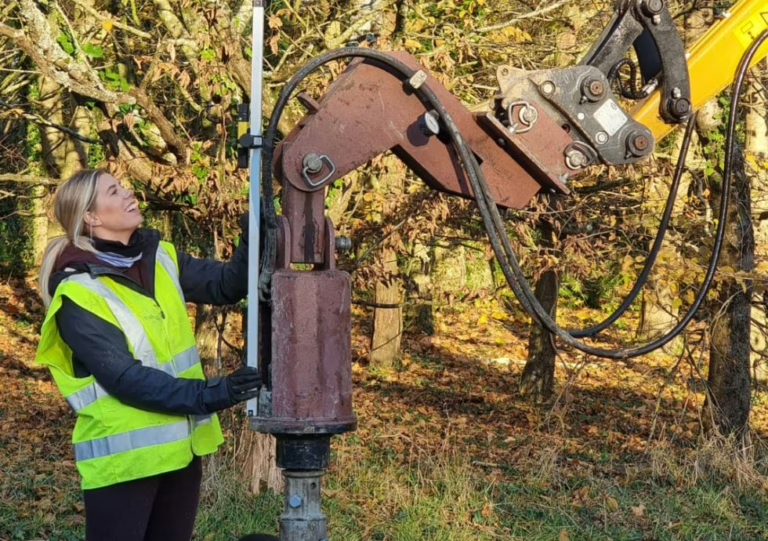
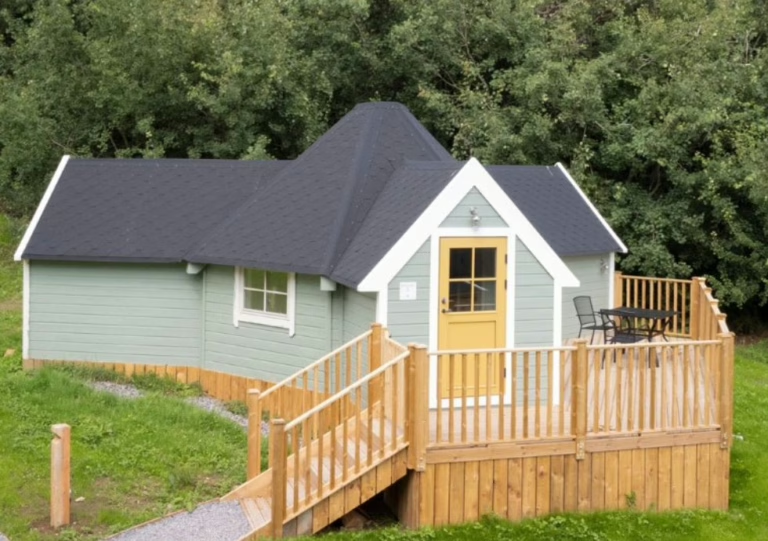
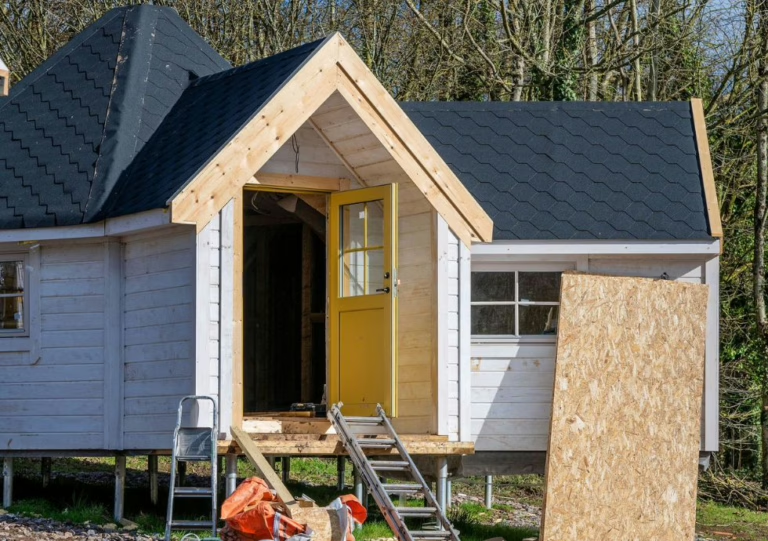
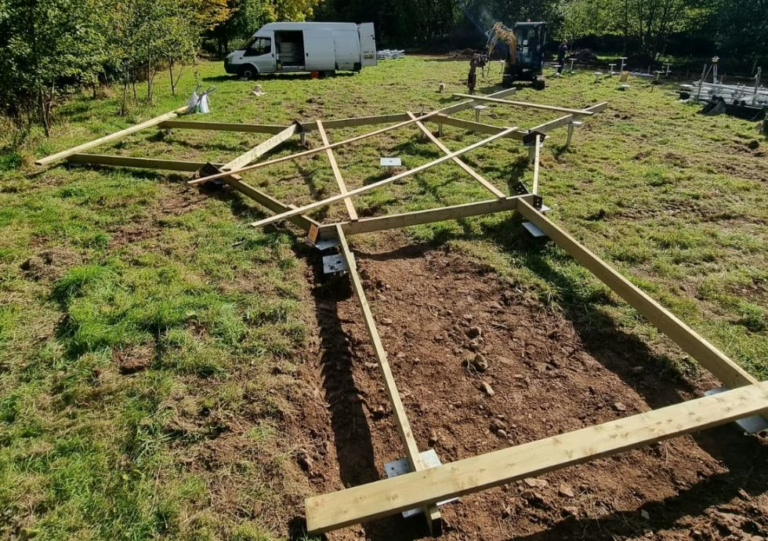
USP Screw Piling is widely accepted across the UK, with all Building Control authorities recognising USP as the go-to screw piling installers for any projects where Root Protection Areas (RPA) or Tree Preservation Orders (TPOs) are present.
Contact us today and talk to one of the USP team about your project. We would love to hear from you to see how we can help.






There is no defining yes or no, however unlike standard foundations such as deep trench foundation / CFA / Omega piles, which do irreparable damage to tree roots, we do know that screw piles have the ability to move the roots when they are smaller and cause less damage to larger ones thus making it a more sustainable and greener solution for foundations around tree root protection areas.
No, screw piling has almost zero vibrations because the equipment used is a traditional excavator with a powered torque head that is basically a motorised screw driver, which ‘screws’ the screw piles into the ground rather than hammering them in. Better for the tree roots and the tree and better for any neighbour relationships.
Anything from extensions, new build houses, retaining walls, garden buildings, sheds, RC concrete pads, ground beams, timber ring beams, steel ring beams. The possibilities are far numerous to note.
Yes, screw piles remove the need for mass excavation of trenches reducing huge bills for removal of muck away as well as increased reinstallation of concrete and any additional rebar that may be necessary
Our team of experts will be happy to help you with any questions you may have, and to provide you with a free, no-obligation quote for your project.
